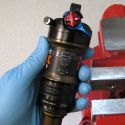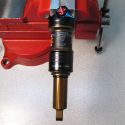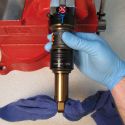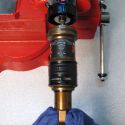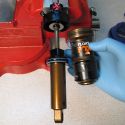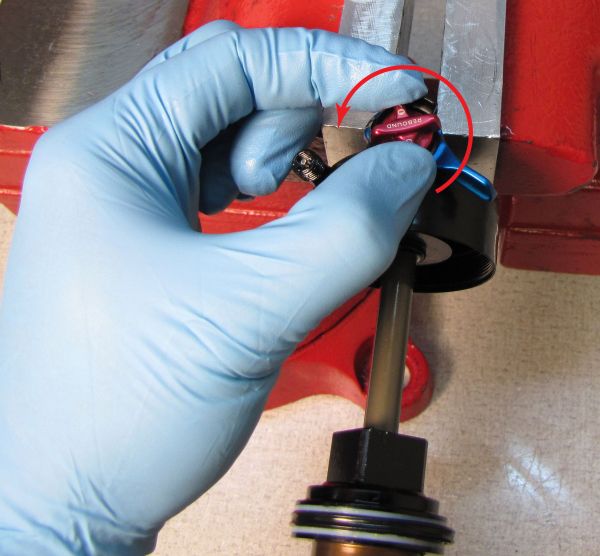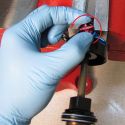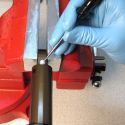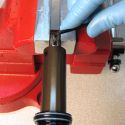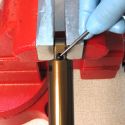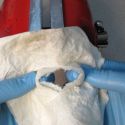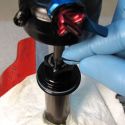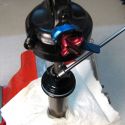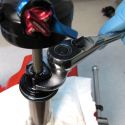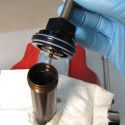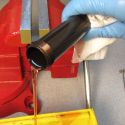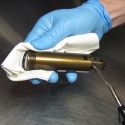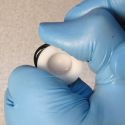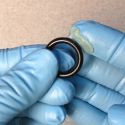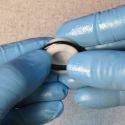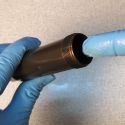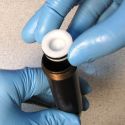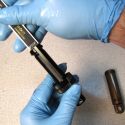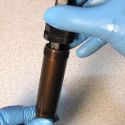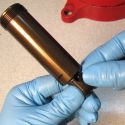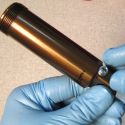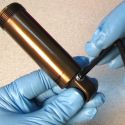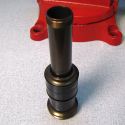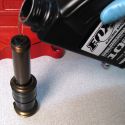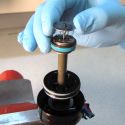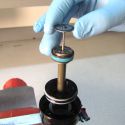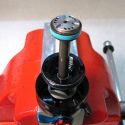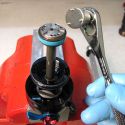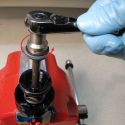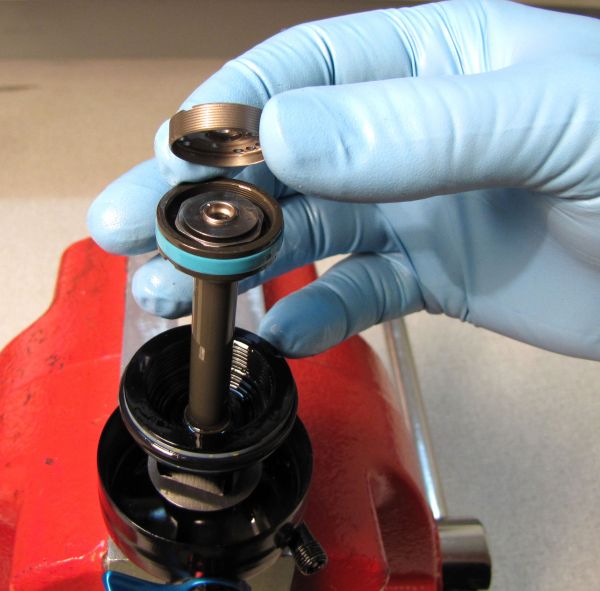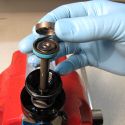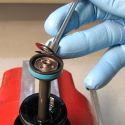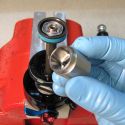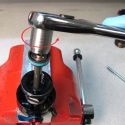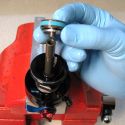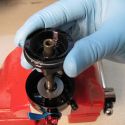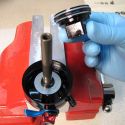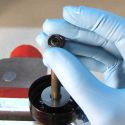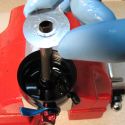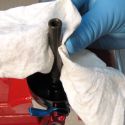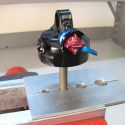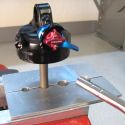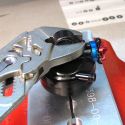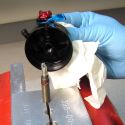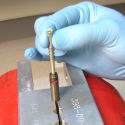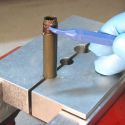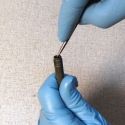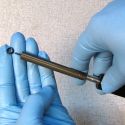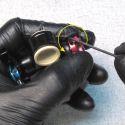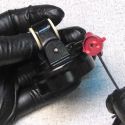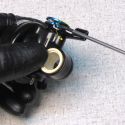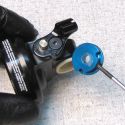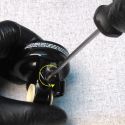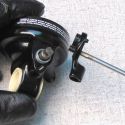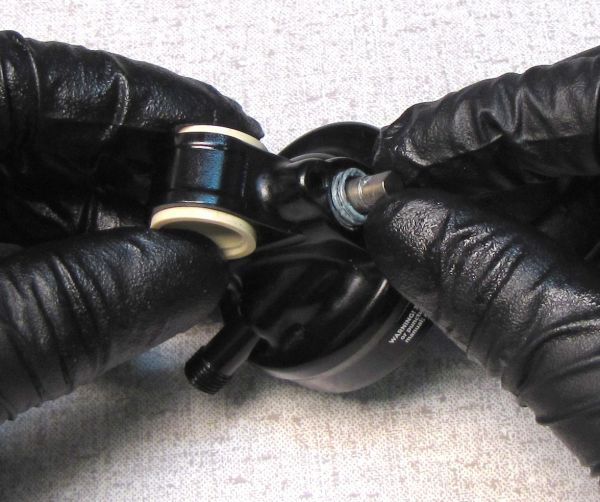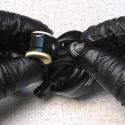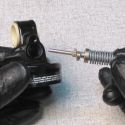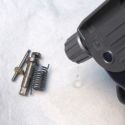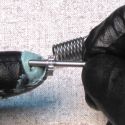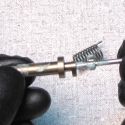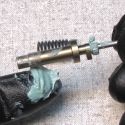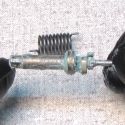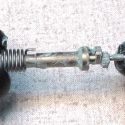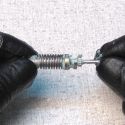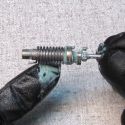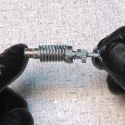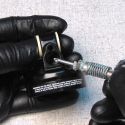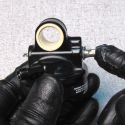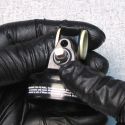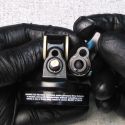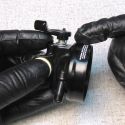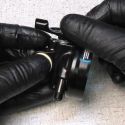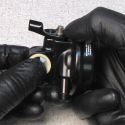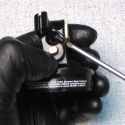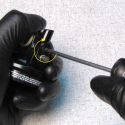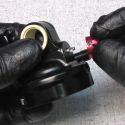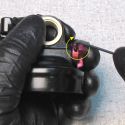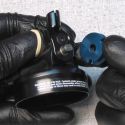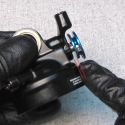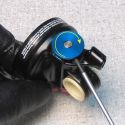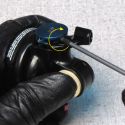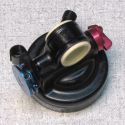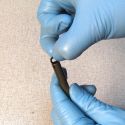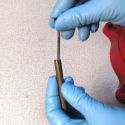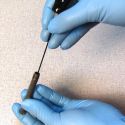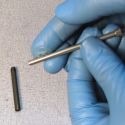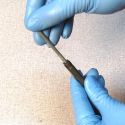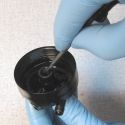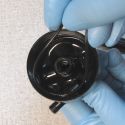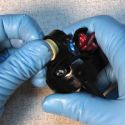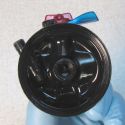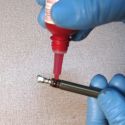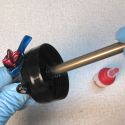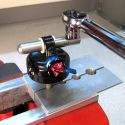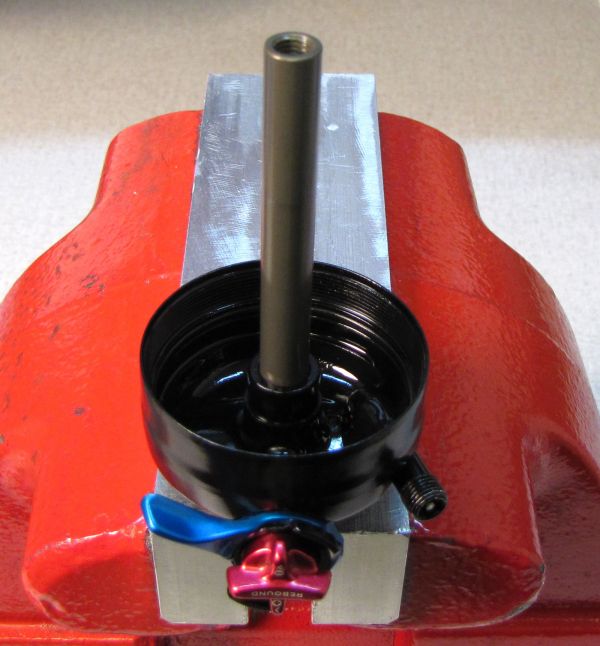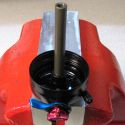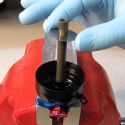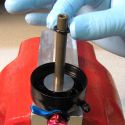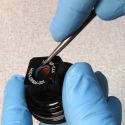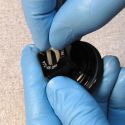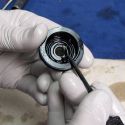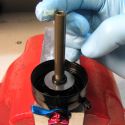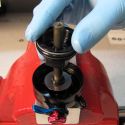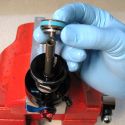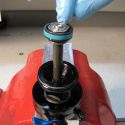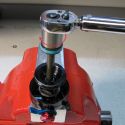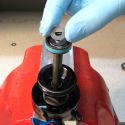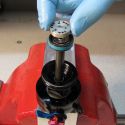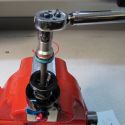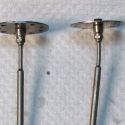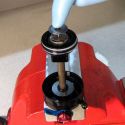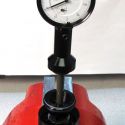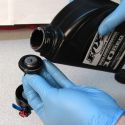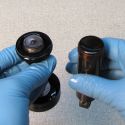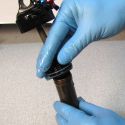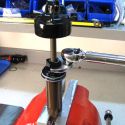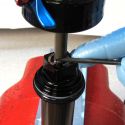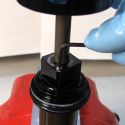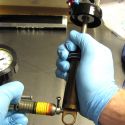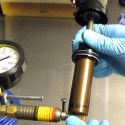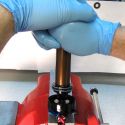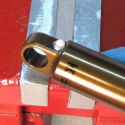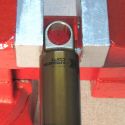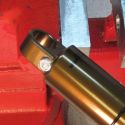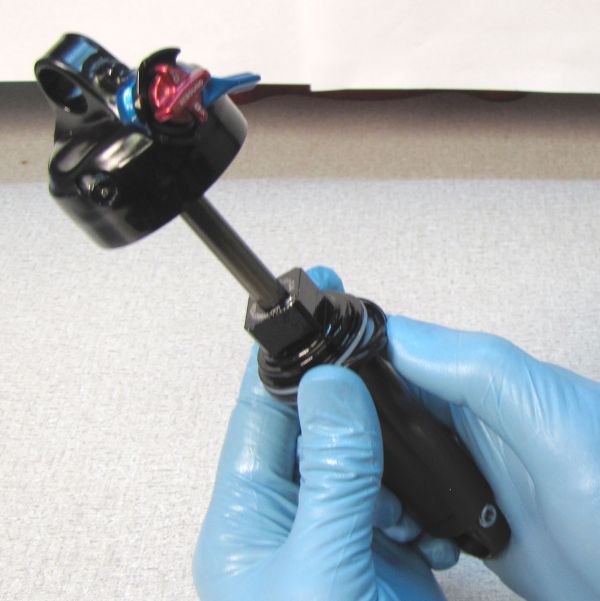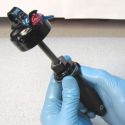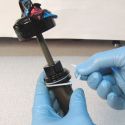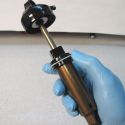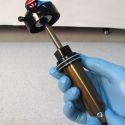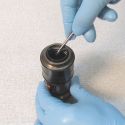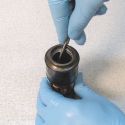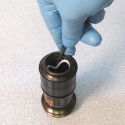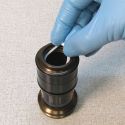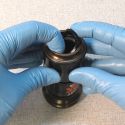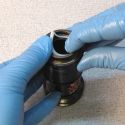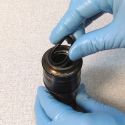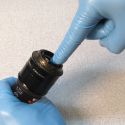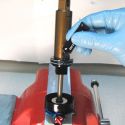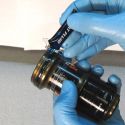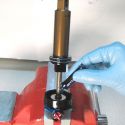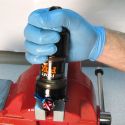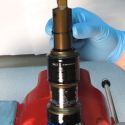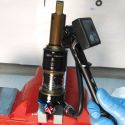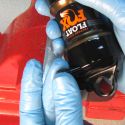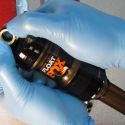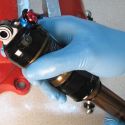2019+ Orbea Oiz FLOAT DPS Remote Rebuild
Required Parts
- 025-02-003 Oil: AM, FOX Suspension Fluid [32 oz.], 10 WT Red
- 803-00-142 Kit: Rebuild, FLOAT Line Air Sleeve, Special Q-Ring
- 803-00-816 Seal Kit: CTD Boost Valve and Dish Shock Rebuild (Same for DPS shocks)
Required Tools
- 398-00-280 Tooling: Eyelet Torque Tool
- 398-00-374 Tooling: Pellet Retainer Tool, Nitrogen Fill
- 398-00-574 Tooling: Dial Indicator, 1" Measuring Range, 0.001" Graduation, 3/8" Stem Diameter
- 398-00-637 Tooling: Custom Socket, 5/8", 2016 Float DPS, Piston Bolt
- 398-00-638 Tooling: Custom Spanner Socket, 3 pin, Float DPS, Lockout Piston
- 802-01-000-KIT Service Set: Air Valve Assy, Nitrogen Safety Needle Assy w/Manual, Complete w/out Gauge
- 803-00-566 Kit:Bike IFP Depth Setting Tool Set
- 803-00-805 Kit: Shaft Clamps, Shocks, CTD 9mm, 3/8in, 1/2in, 5/8in
- 803-00-806 Kit: Tooling, iCD/CTD Dish Shock Dial Indicator Attachment for Plate Lift Measurement
- Nitrogen Fill Station (Tank with Regulator) required for full rebuild .
WARNING: Always wear safety glasses and protective gloves during service to prevent potential injury. Failure to wear protective equipment during service may lead to SERIOUS INJURY OR DEATH.
IFP Information:
| IFP Pressure | 500psi |
| IFP Depth | 2.150in +/- 0.020in |
WARNING: FOX products should be serviced by a qualified bicycle service technician, in accordance with FOX specifications. If you have any doubt whether or not you can properly service your FOX product, then DO NOT attempt it. Improperly serviced products can fail, causing the rider to lose control resulting in SERIOUS INJURY OR DEATH.
WARNING: Modification, improper service, or use of aftermarket replacement parts with FOX forks and shocks may cause the product to malfunction, resulting in SERIOUS INJURY OR DEATH. DO NOT modify any part of a fork or shock, including the fork brace (lower leg cross brace), crown, steerer, upper and lower leg tubes, or internal parts, except as instructed herein. Any unauthorized modification may void the warranty, and may cause failure or the fork or shock, resulting in SERIOUS INJURY OR DEATH.
WARNING: FOX suspension products contain pressurized nitrogen, air, oil, or all 3. Suspension misuse can cause property damage, SERIOUS INJURY OR DEATH. DO NOT puncture, incinerate or crush any portion of a FOX suspension product. DO NOT attempt to disassemble any portion of a FOX suspension product, unless expressly instructed to do so by the applicable FOX technical documentation, and then ONLY while strictly adhering to all FOX insturctions and warnings in that instance.
WARNING: Never attempt to pull apart, open, disassemble, or service a FOX shock that is in a "stuck down" condition. A "stuck down" condition results from a failure of the dynamic air seal (located between the positive and negative air chambers within the non-EVOL shock air sleeve), resulting with the negative chamber retaining a higher pressure than the positive chamber. To test whether the shock is in fact "stuck down":
- Remove the air cap and depress the Schrader valve, to completely release air pressure from the positive chamber of the shock.
- If the shock body retracts into the air sleeve near bottom-out after the air is released from the positive chamber, attach a FOX high pressure pump and pressurize the shock to 250psi (17 bar).
- If the shock does not fully extend, it is in a "stuck down" condition.
Any attempt to service FOX air shocks in the "stuck down" condition can lead to SERIOUS INJURY OR DEATH. Contact FOX or an Authorized Service Center for repair.
Using the EVOL Air Sleeve
The EVOL air sleeve is an option on FLOAT DPS and FLOAT X models. The EVOL air sleeve provides an external negative air chamber added to the main air sleeve to significantly reduce the force to initiate travel, providing excellent small bump performance. The system is also more linear in its progression offering improved mid stroke support and better bottom out resistance. It is important to add or remove air from the EVOL sleeve as detailed below to experience the best possible performance.
When adding air to the air chamber, it is important to equalize the positive and negative air chambers by slowly compressing the shock through 25% of its travel 10-20 times after every 50psi addition.
- Adding air to the shock without periodically equalizing the air chambers can lead to a condition in which the shock has more pressure in the positive chamber than the negative. In this condition the shock will be very stiff and can top-out. You can equalize the air chambers by slowly compressing the shock until you feel and hear a transfer of air. Hold the shock at this point for a few seconds to allow the air to transfer from the positive to the negative chamber.
When releasing air from the air chamber, it is important to do this slowly so the shock can transfer air from the negative to positive chamber and then be realeased through the Schrader valve.
- Releasing the air pressure too quickly can induce a condition in which the negative chamber has more pressure than the positive chamber. In this condition the shock will compress into its travel and not fully extend. You can remedy this by adding air pressure until the shock extends, then slowly compressing the shock through 25% of its travel 10-20 times.
General Disassembly
NOTE: Some images in this rebuild show a standard FLOAT DPS shock. While in some cases the FLOAT DPS shock for Orbea Oiz bikes may appear different, please follow the instructions provided below.
Releasing the air pressure too quickly can induce a condition in which the negative chamber has more pressure than the positive chamber. In this condition the shock will compress into its travel and not fully extend. You can remedy this by adding air pressure until the shock extends, then slowly compressing the shock through 25% of its travel 10-20 times. Release air pressure slowly via the bleed button of your shock pump to prevent Stuckdown.
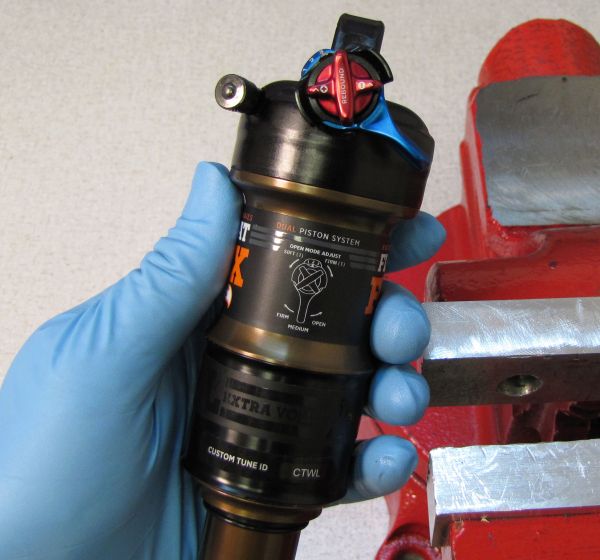
Step 1
Clamp your shock in a soft-jawed vice. Remove the black air cap and thread on your FOX shock pump. Slowly release all air from the main air chamber with your pump, then remove the pump.
WARNING: Please verify that all air has been released from the air chamber by pushing down on the Schrader valve core. Failure to release all air pressure before further disassembly may cause parts to eject causing SEVERE INJURY OR DEATH.
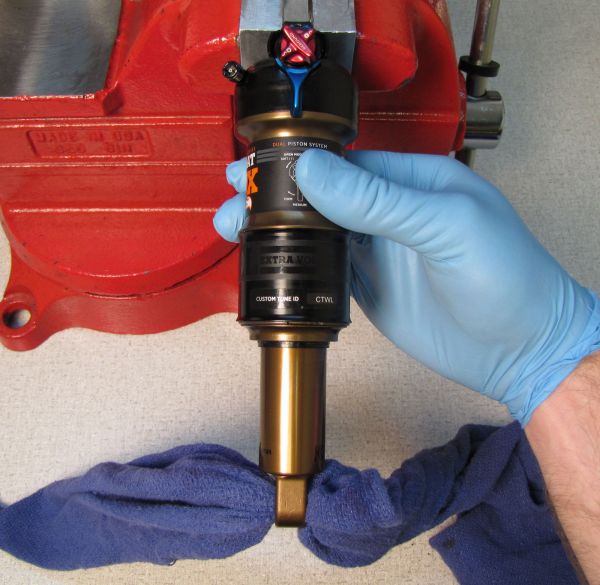
Step 2
Thread a cloth rag through the body eyelet of your shock, then unthread the air sleeve. Unthread the rag and pull the air sleeve off to remove.

Step 4
Using a pick tool, remove the nylon plug to access the pellet screw. Use a 5/32" hex to release the nitrogen pressure and remove the pellet retainer. Remove the pellet with the pick tool.
WARNING: FLOAT DPS Remote PTU shocks may contain high pressure oil, air, or nitrogen after releasing the IFP charge and removing the bleed screw at the bearing housing. Always actuate the PTU remote pulley after releasing the IFP pressure and removing the bleed screw at the bearing housing. This will release any pressurized oil, air, or nitrogen trapped between the IFP and the lockout piston. Failure to actuate the remote pulley and release the pressurized oil can lead to parts ejecting from the shock upon disassembly which can cause SEVERE INJURY or DEATH.
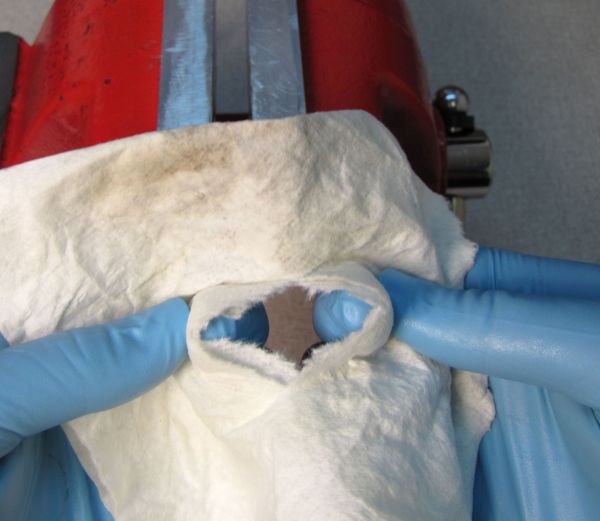
Step 5
TIP: Poke a hole in a lint-free paper towel and stretch it over your shock damper to collect oil from this step.
Clamp the shock vertically and use a 5/64" hex to slowly remove the bleed screw. Use a magnet to remove the ball from under the bleed screw. Unthread the bearing assembly from the shock body with a 3/4in wrench. Position your wrench so the wrench does not apply torque to the bleed hole.
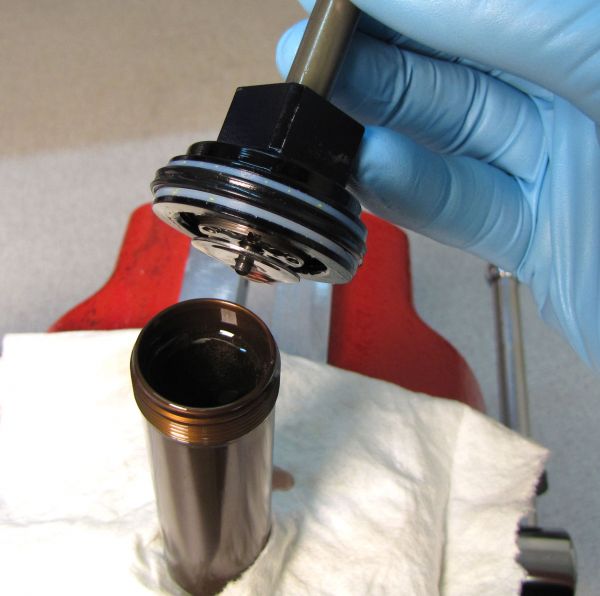
Step 6
Remove the shaft assembly from the body and pour out the damper oil. Remove the IFP using carefully applied air pressure. Inspect the body for damage or excessive wear.
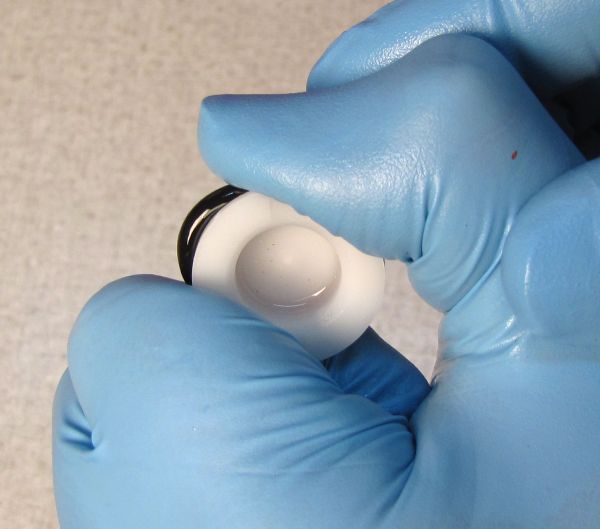
Step 7
Remove the IFP o-ring and inspect its gland on the piston itself for any damage or contamination. Apply Slick Honey grease to the new IFP o-ring from the replacement seal kit, and install it on the piston.

Step 8
Apply a very thin film of Slick Honey to the inside of the shock body, then insert the IFP with it's slot facing up. Adjust your IFP depth setting tool (PN: 803-00-566) to the correct IFP depth of 2.150in +/- 0.020in. Use your IFP depth setting tool to push the IFP down to it's appropriate depth.
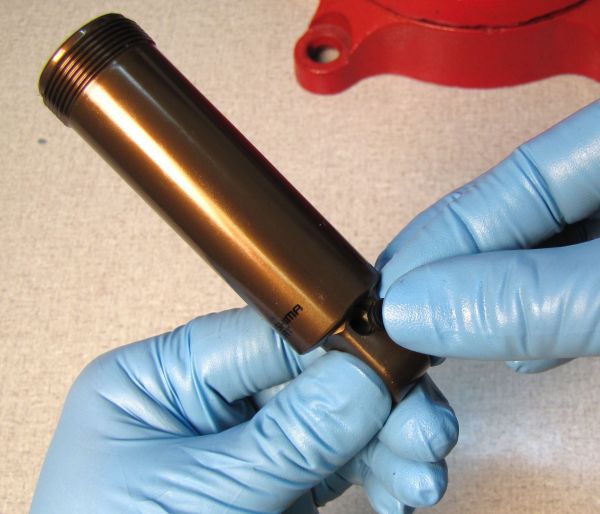
Step 9
Install a new pellet from the service kit with the flat side facing up, then lightly secure with the pellet retainer.
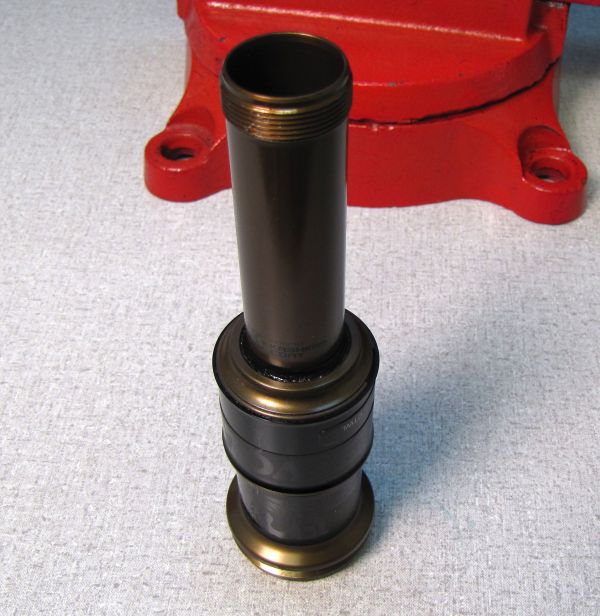
Step 10
Prefill the shock body with FOX 10wt. Red oil, pouring down the side to minimize potential aeration of the oil. Set the body aside in a vertical position and move on to the next step. This allows time for any trapped air to escape.
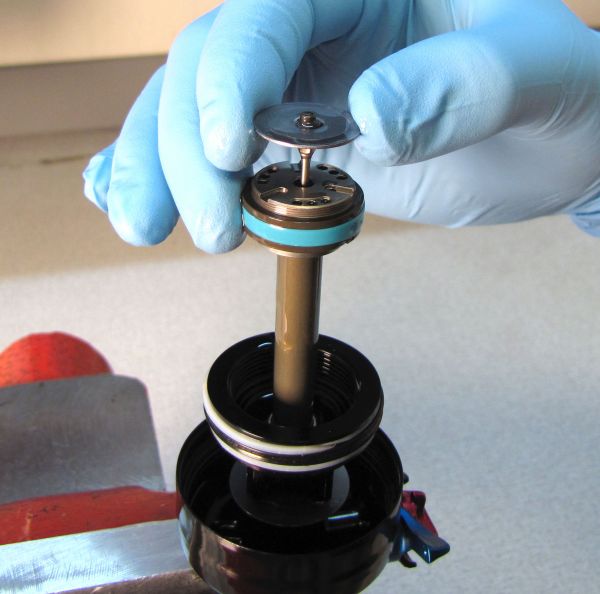
Step 11
Clamp the eyelet assembly in your soft-jawed vice and carefully lift up on the lockout plate to remove.
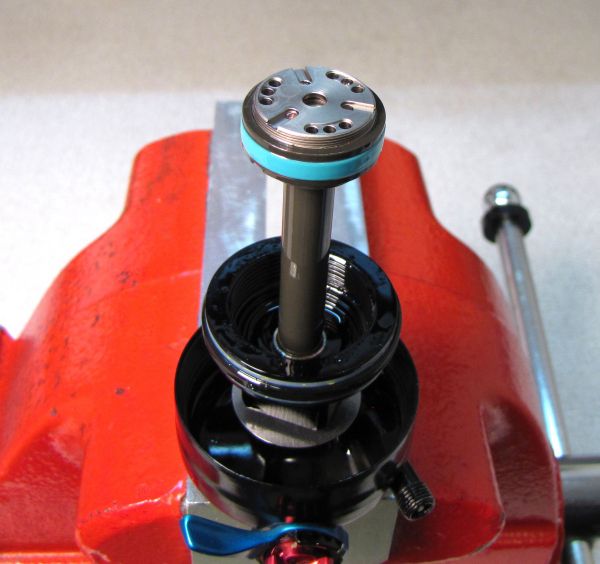
Step 12
Use the FLOAT DPS lockout piston tool (PN: 398-00-638) to unthread the lockout piston from the piston assembly.
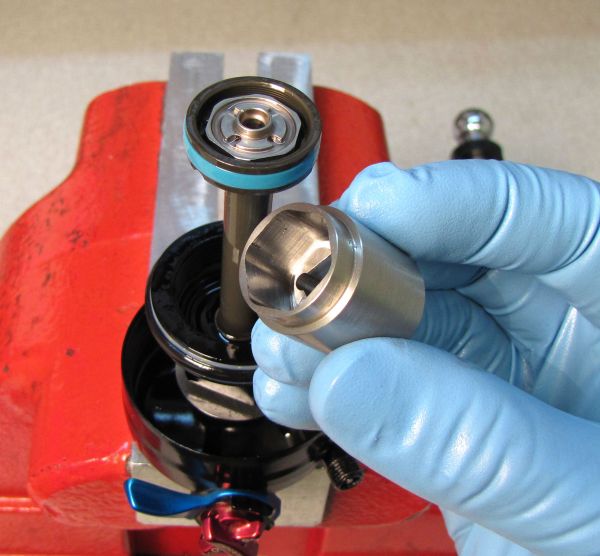
Step 14
Use the FLOAT DPS piston bolt tool (PN: 398-00-637) to unthread the piston bolt. Remove the piston assembly and set it aside.
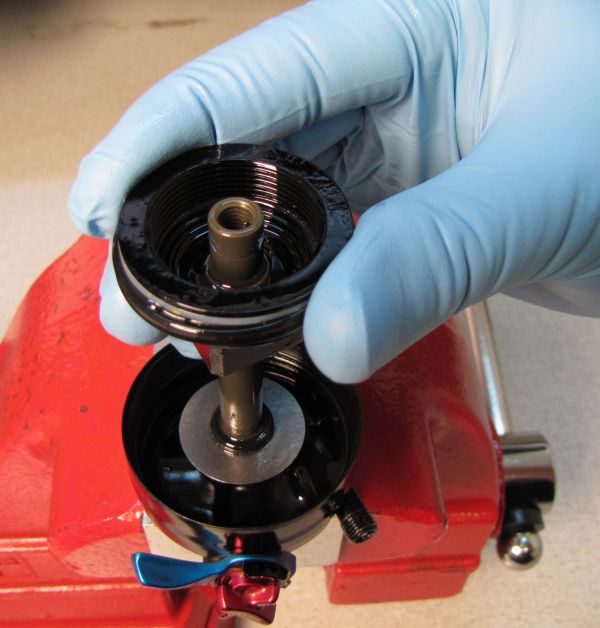
Step 15
Remove the bearing assembly by lifting it off the shaft. Remove the bottom out o-ring and bottom out plate.
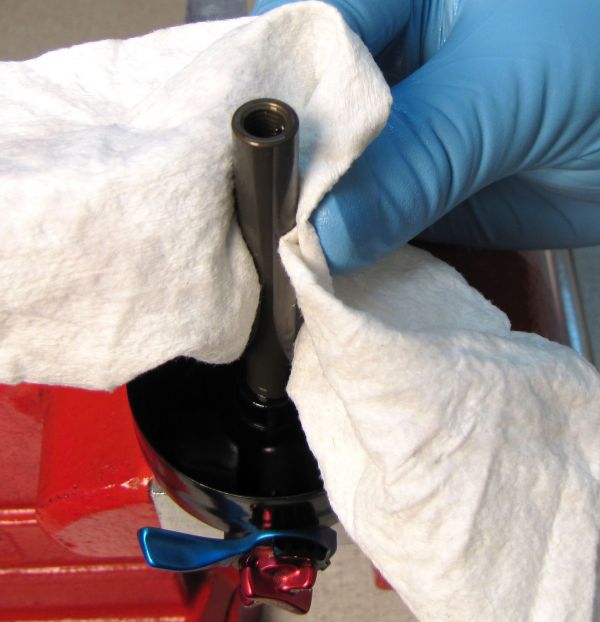
Step 16
Clean the shaft with Isopropyl alcohol and a lint-free paper towel. Carefully clamp the shaft in your 9mm shaft clamps (PN: 803-00-805).
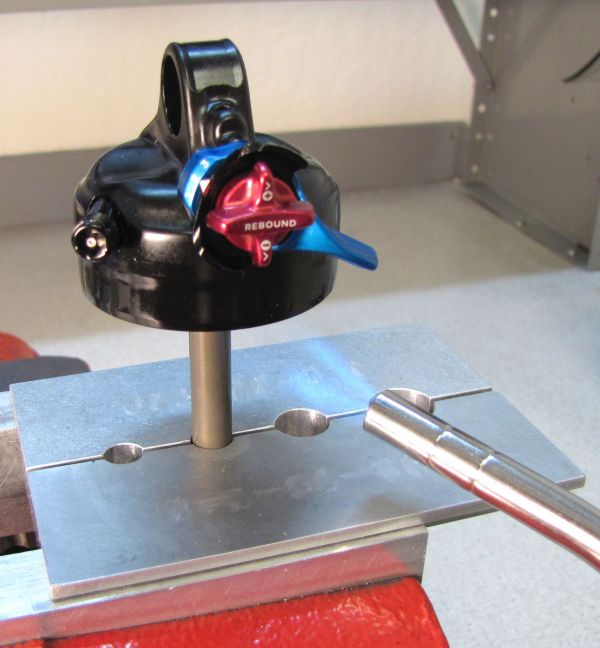
Step 17
Carefully apply heat to the connection between the shaft and the eyelet with a propane torch for 5-10 seconds to break down the Loctite. Unthread the eyelet counter-clockwise, then lift up to remove.
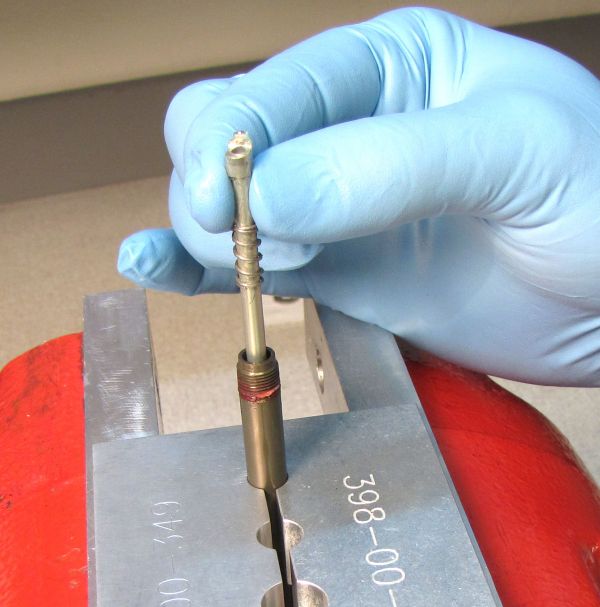
Step 18
Remove the rebound metering rod by pulling it up and out of the shaft. Be careful not to lose the small ball bearing at the square end of the rebound metering rod. Carefully remove any Loctite residue from the shaft and eyelet with a plastic pick tool.
Note: Spring pictured is not present in Orbea Oiz FLOAT DPS shocks.
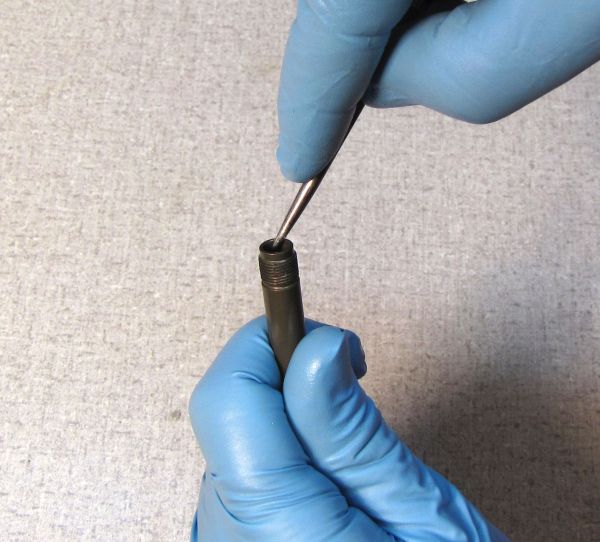
Step 19
Carefully remove the o-ring from inside the shaft with a pick tool. A blunt tool like a small hex wrench can be used inside the shaft to push the o-ring out once pulled away from the wall with the pick tool.
Remote Eyelet Rebuild
Eyelet assemblies do not need to be rebuilt as part of a standard shock service. You should only disassemble the eyelet assembly in order to replace damaged or missing parts or to clean out contamination if the adjusters feel gritty when used. If not rebuilding the eyelet assembly, please go to General Reassembly »
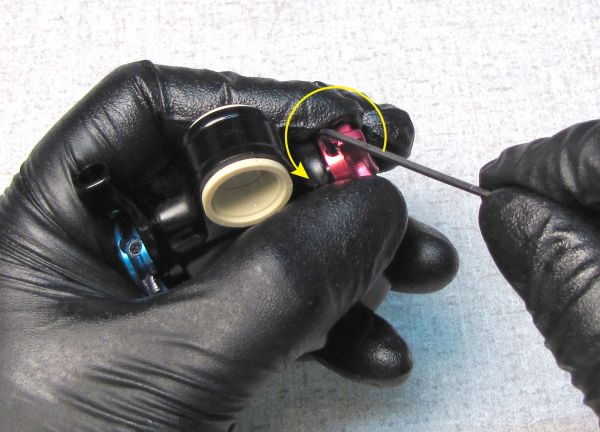
Step 1
Remove the red rebound knob by unthreading (counter-clockwise) its 1.5mm set screws. Remove the blue remote pulley by unthreading the T8 Torx screw (counter-clockwise). Do not completely remove the set screws from the knobs before setting the knobs aside.
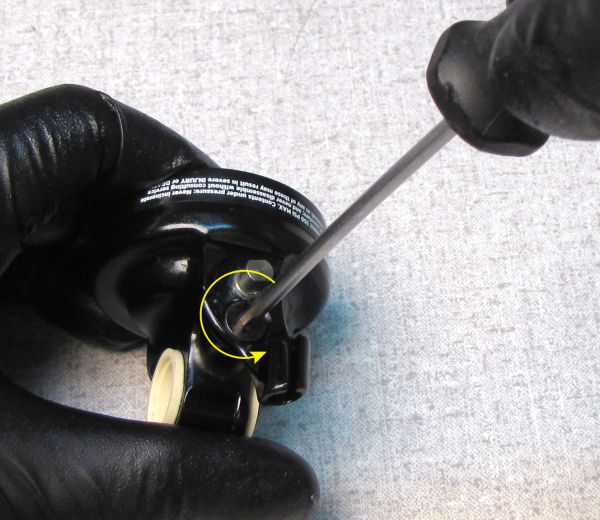
Step 2
Remove the set screw retaining the Cable Hanger by unthreading it counter-clockwise with a 2.5mm hex wrench. Remove the Cable Hanger.
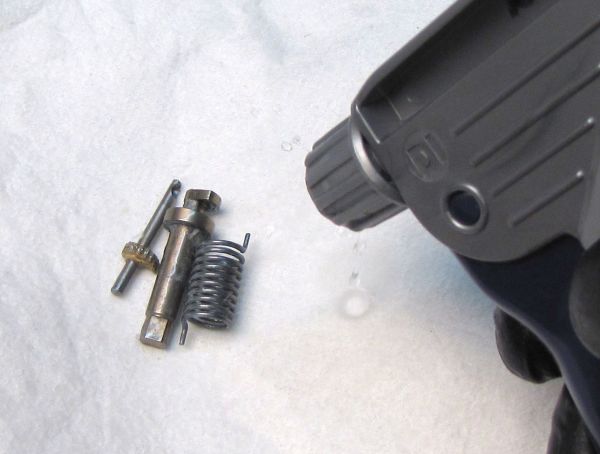
Step 4
Clean the Torsion Spring and Cams with Isopropyl alcohol and a lint-free paper towel. Coat the clean cams with a thick film of water-proof marine grease such as Sta-Lube SL3125. Insert the short end of the Rebound Cam into the lobed end of the Compression Cam as shown.
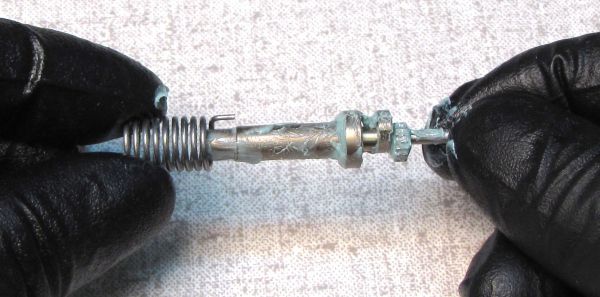
Step 5
Install the Torsion Spring over the Compression Cam. Insert the tang of the spring into the hole in the round portion of the Compression Cam. Coat the Torsion Spring with a thick film of water-proof marine grease such as Sta-Lube SL3125.
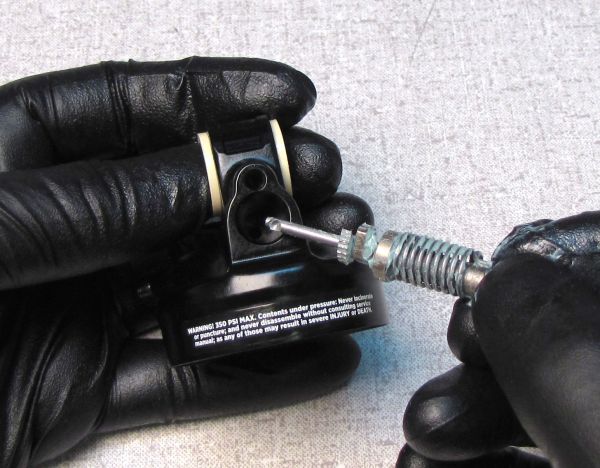
Step 6
Insert the prepared Cams and Torsion Spring into the Eyelet with the Rebound Cam first. Seat the Cam assembly fully into the Eyelet as shown.
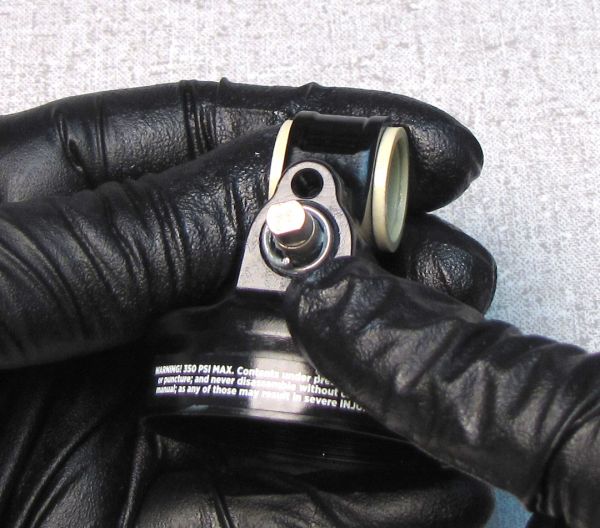
Step 7
Insert the exposed tang of the Torsion Spring into the hole in the Cable Hanger. Push the Cable Hanger against the eyelet then install the set screw tightening clockwise to 25 in-lb (2.8 Nm) torque with a 2.5mm hex wrench.
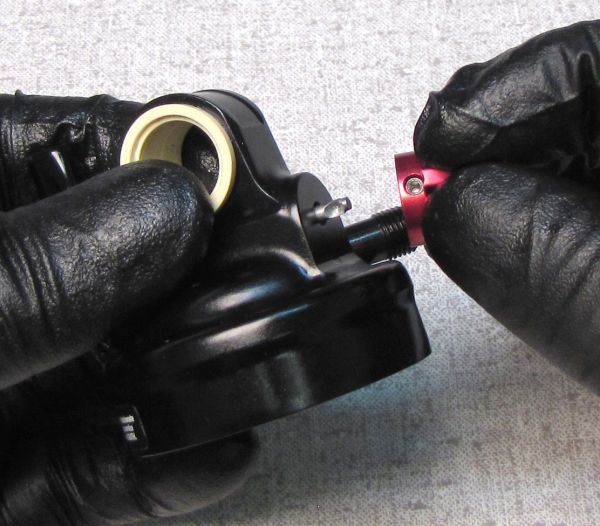
Step 8
Reinstall the red Rebound knob by aligning its set screw with the depression in the Rebound Cam. Tighten the set screw to 5 in-lb (0.5 Nm) torque with a 2mm hex wrench.
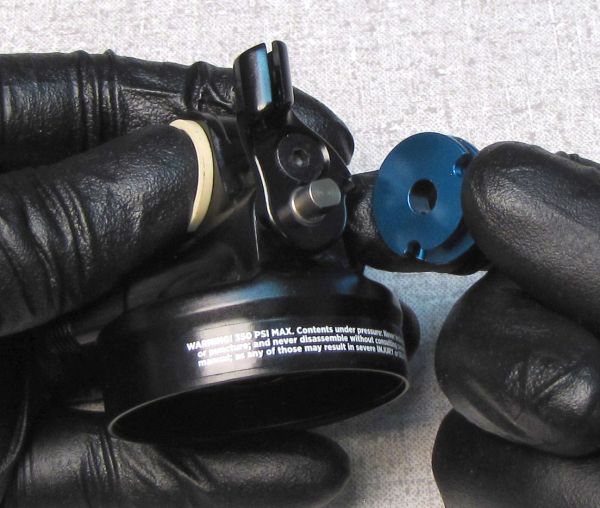
Step 9
Install the blue remote Pulley onto the Compression Cam so the T8 Torx screw is oriented toward the flat of the Cam facing away from the Cable Hanger. Leave the Pulley far enough from the face of the Cable Hanger to allow for its rotation. Tighten the T8 Torx screw just enough to allow for the Pulley to rotate the cam while still being able to be pushed further onto the Cam once in its final position.
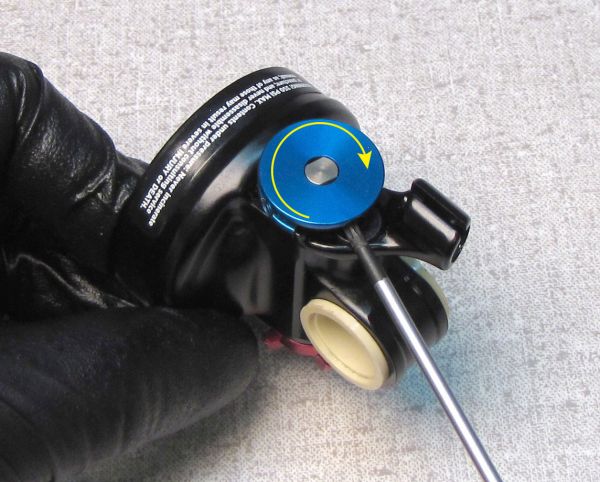
Step 10
Use a T8 Torx wrench in the T8 Torx bolt to help wind the pulley clockwise past the pulley stop feature on the black Cable Hanger. After winding past the pulley stop, press the blue pulley down against the black Cable Hanger. Tighten the T8 Torx screw to 8 in-lb (0.9 Nm) torque.
Test the function of the remote pulley by turning it clockwise and feeling for spring torsion retracting the pulley counter-clockwise. If no spring tosion is felt, repeat the Remote Eyelet Rebuild process.
General Reassembly
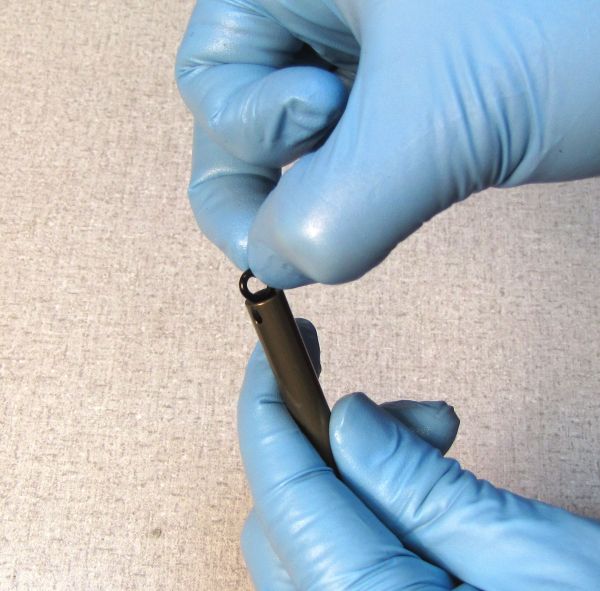
Step 1
Coat the new o-ring from the kit with Slick Honey and install it into the shaft using blunt tools such as hex wrenches to fit it into position within its seal groove.
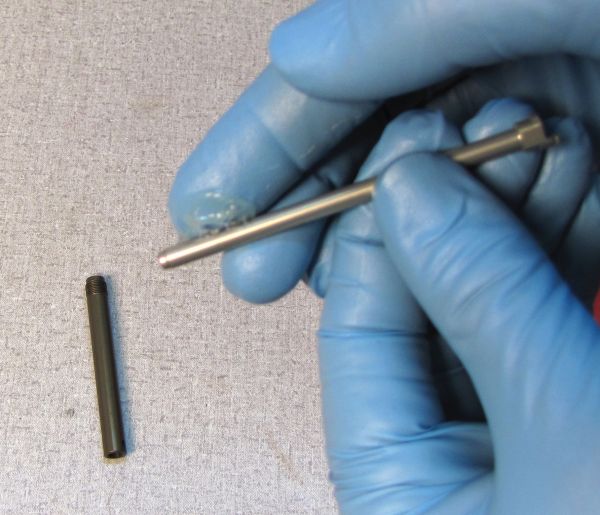
Step 2
Coat the narrow end of the rebound metering rod with a thin film of Slick Honey and carefully insert it into the internal shaft o-ring to seat it completely within its groove.
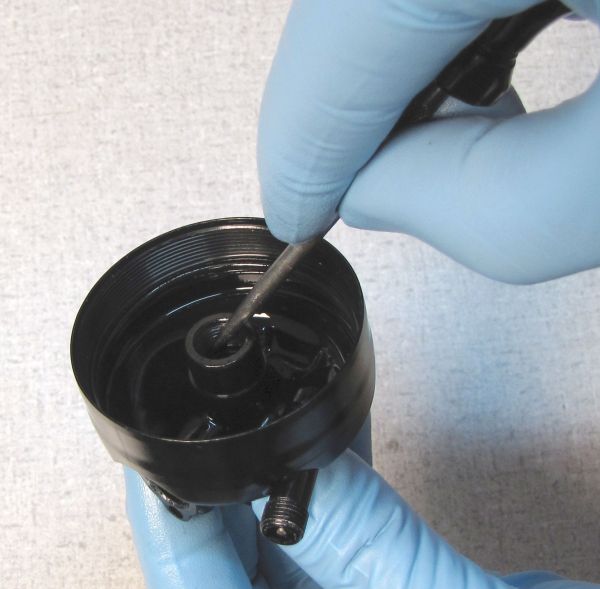
Step 3
Replace the two o-rings within the eyelet with new greased ones from the kit. Reinstall the eyelet bushings to prepare to tighten it to the shaft in the next step.
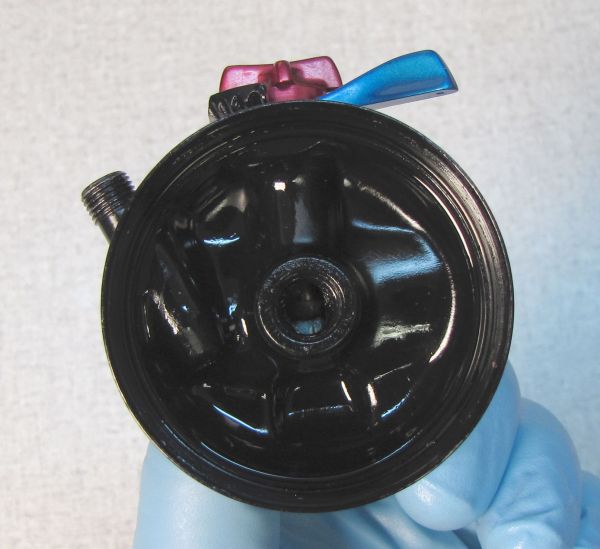
Step 4
Apply a small drop of red Loctite 277 to the shaft threads.
Install the shaft into the eyelet with the ball bearing on the metering rod oriented toward the rebound knob.
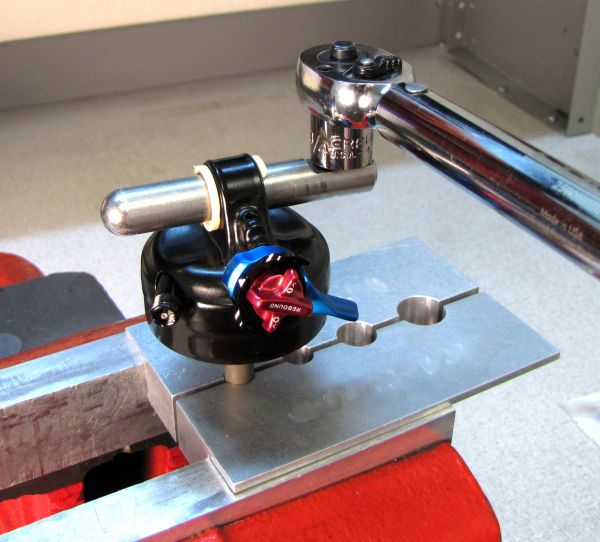
Step 5
Clean the shaft with Isopropyl alcohol then clamp it in your 9mm shaft clamps. Use your eyelet torque tool (PN: 398-00-280) to tighten the eyelet to 85 in-lb (9.6 Nm) torque.
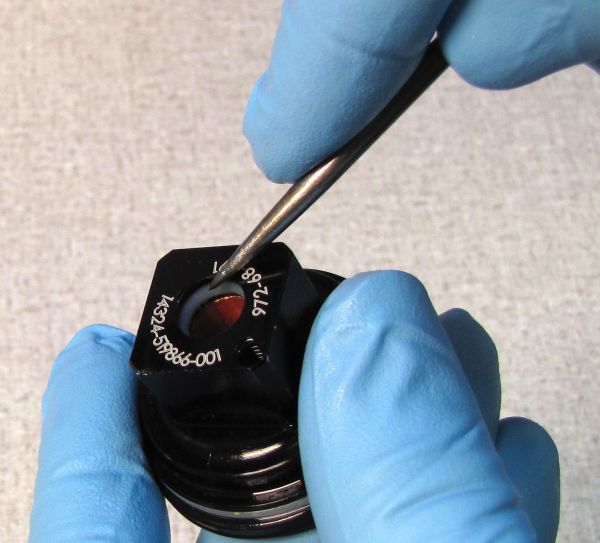
Step 7
Replace the two o-rings within the bearing assembly with new greased ones from the kit. Coat the shaft with a thin film of Slick Honey, then reinstall the bearing assembly onto the shaft.
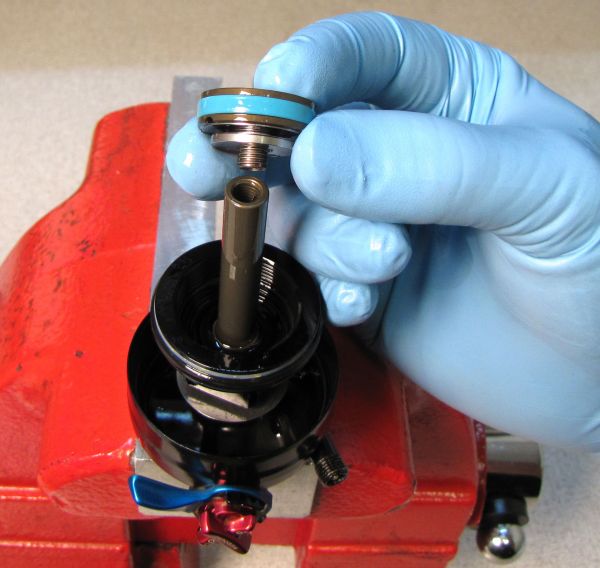
Step 8
Install the valving assembly up to the piston bolt. Tighten the piston bolt with the FLOAT DPS piston bolt tool (398-00-637) to 60 in-lb (6.8 Nm).
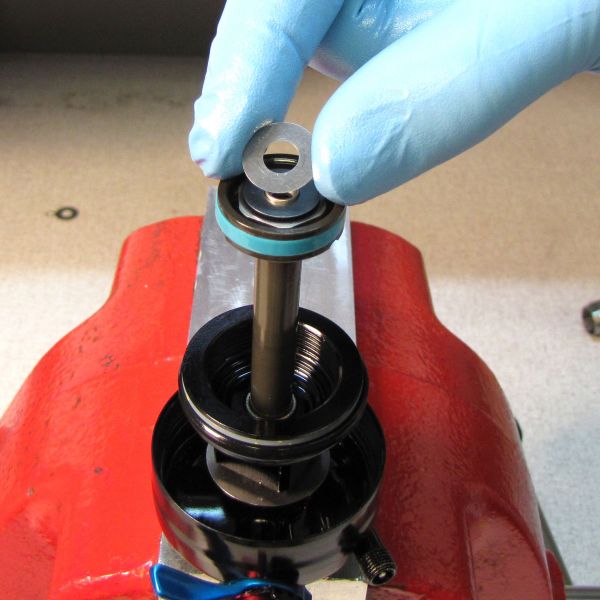
Step 9
Reinstall the lockout shim stack, followed by the lockout piston. Tighten the lockout piston to 22 in-lb (2.5 Nm) with the FLOAT DPS lockout piston tool (PN: 398-00-638).
The compression rod can be easily bent if not installed properly. Always push against the bolt in the center of the lockout plate when installing the compression rod. Never push on the edges of the lockout plate when installing the compression rod as this can cause damage to the part not covered under warranty.
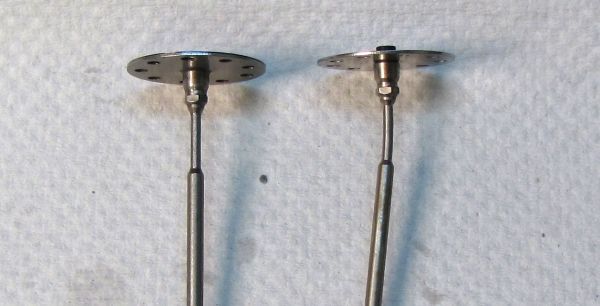
Step 10
Insert the compression rod through the lockout piston, being careful not to damage the o-ring within the rebound metering rod or bending the compression rod. Only press against the bolt in the center of the lockout plate when installing the compression rod. Rotate the Tri-lobe Lockout Plate until its hole aligns with the dowel pin protruding from the Lockout Piston.
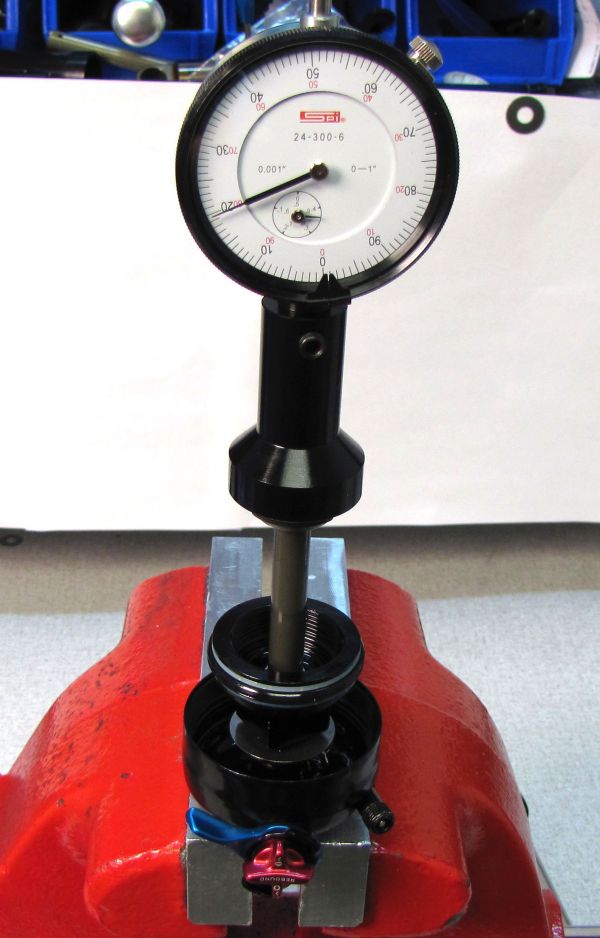
Step 11
Use the shock dial indicator (PN: 803-00-806 and 398-00-574) to measure lockout plate lift.
When switching from Firm to Open modes, Lockout plate lift should measure between 0.072-0.090in (1.83-2.29mm).
1 or 2 spacers (044-20-035 or 044-10-035) may be added or removed from the lockout shim stack to adjust lockout plate lift to within approved range.
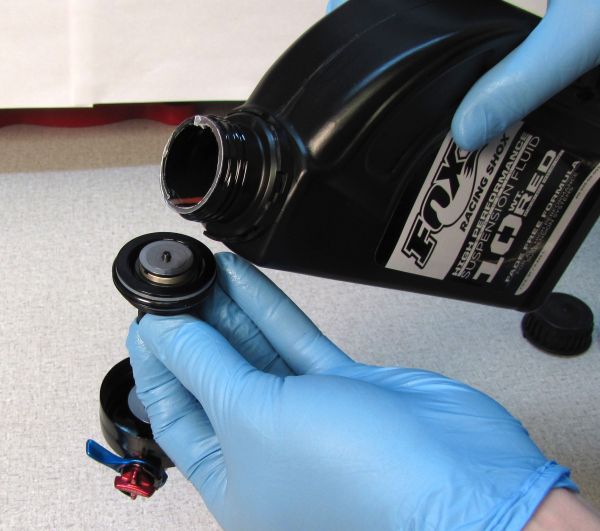
Step 12
Turn the red rebound knob to its open positions (fully counter-clockwise).
Slide the bearing assembly toward the piston assembly, then pre-fill the piston assembly with FOX 10wt. red oil. Invert the shaft assembly inserting the piston assembly into the previousely prepared and filled shock body. Thread the bearing assembly onto the body then tighten to 240 in-lb (27.1 Nm) with your 3/4in crow's foot. Position your crow's foot so the wrench does not apply torque to the bleed hole in the bearing assembly.
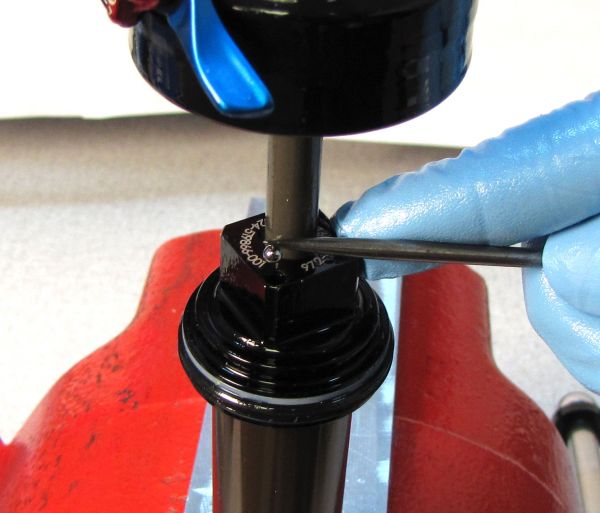
Step 13
Insert the ball bearing followed by the bleed screw into the bleed hole in the bearing assembly. Tighten the bleed screw to 10-15 in-lb (1.1-1.7 Nm) with a 5/64" hex wrench.
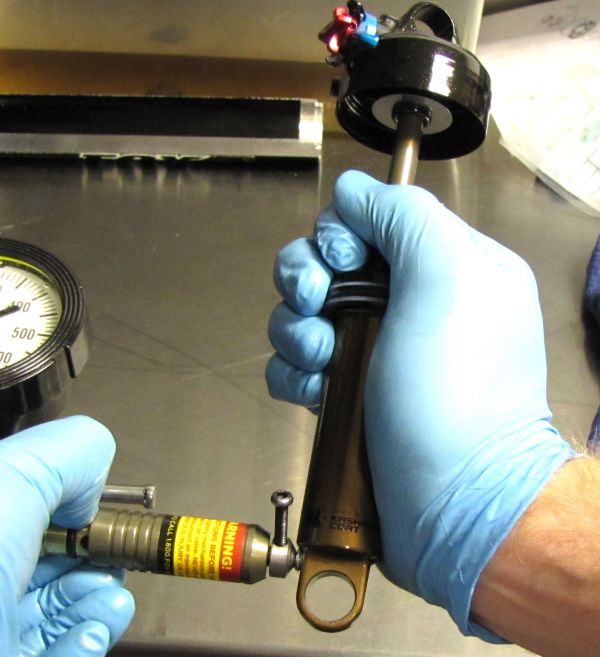
Step 14
Insert the Nitrogen Fill Pellet Retainer tool (PN: 398-00-374) into the pellet retainer near the end of the body. Use the Pellet Retainer tool to unthread the pellet retainer 1/4 turn. Depress the safety button on the nitrogen fill needle (PN: 802-01-000-KIT), then slide the shock onto the needle by pressing toward the nitrogen fill needle. Charge the IFP chamber to 500 psi. Use the Pellet Retainer tool to gently tighten the pellet retainer by 1/4 turn. Quickly pull the shock straight away from the nitrogen fill needle. A loud pop will be heard. Use a 5/32" hex wrench to tighten the pellet retainer to 14 in-lb (1.6 Nm).
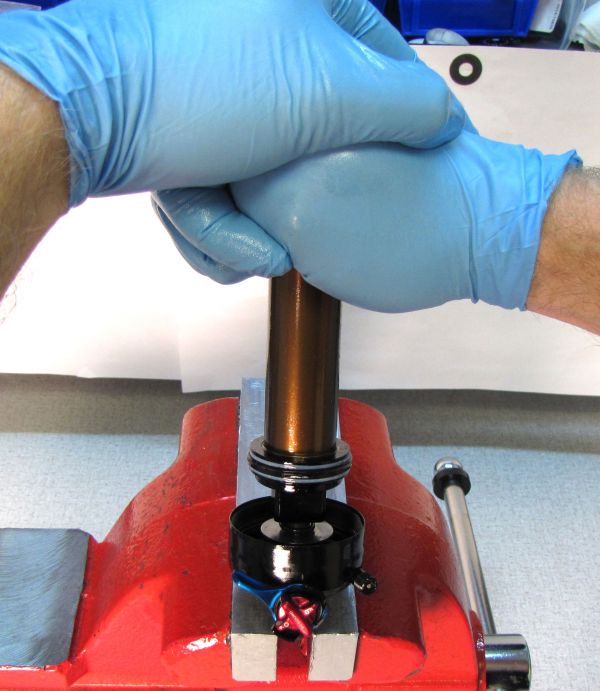
Step 15
Compress the shock in all modes to test its function. Insert a new Delrin ball from the kit into the pellet retainer. Press the Delrin ball into the pellet retainer with your soft-jawed vice.
Air Sleeve Service
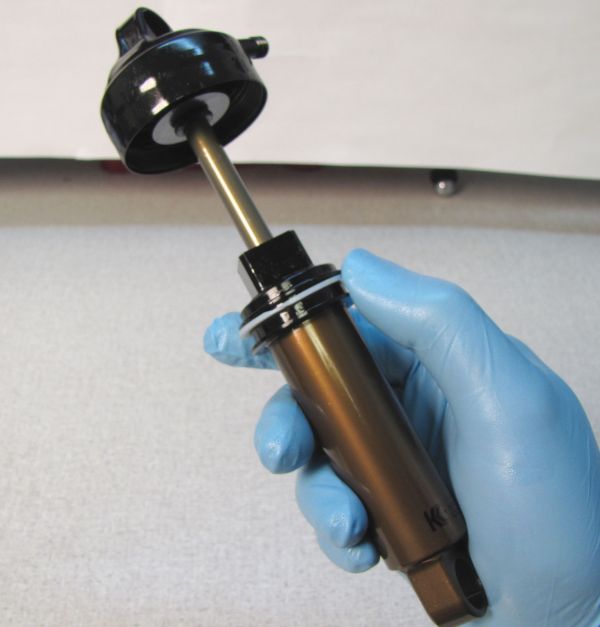
Step 2
Install a new backup ring from the kit, followed by the new main air seal coated with a thin film of Slick Honey, then the second backup ring. Make sure that the overlapping portions of the backup rings are correctly position with the two beveled edges of each ring facing each other.
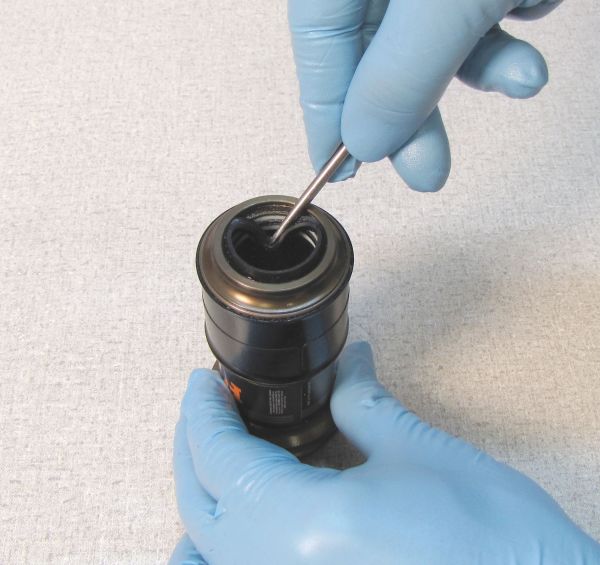
Step 3
Carefully remove the wiper seal, backup rings, and negative air seal from the end of the air sleeve without scratching any portion of the air sleeve. Use a plastic or wooden pick to remove the internal seals to prevent scratching the air sleeve. A scratched air sleeve can cause air loss not covered under warranty.
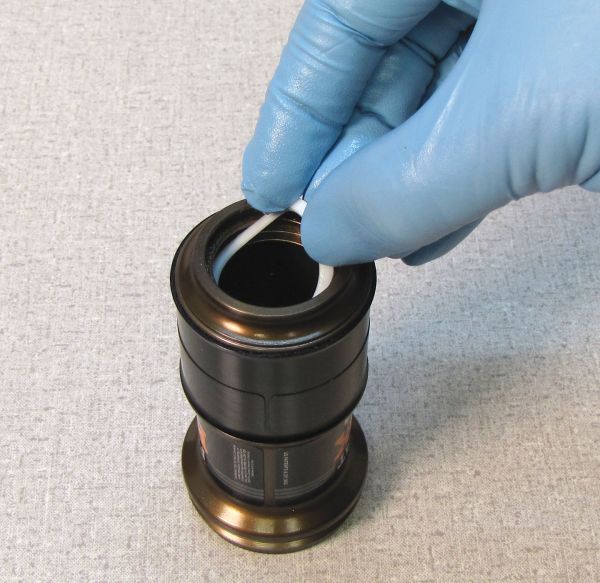
Step 4
Insert a new backup ring into the air sleeve followed by the new greased negative air seal and the last backup ring. These parts should fit tightly into the inner seal groove in the end of the air sleeve. Install the wiper seal with its lip facing out into the outermost seal groove. Press all parts against the wall of the air sleeve to make sure they are all seated correctly.
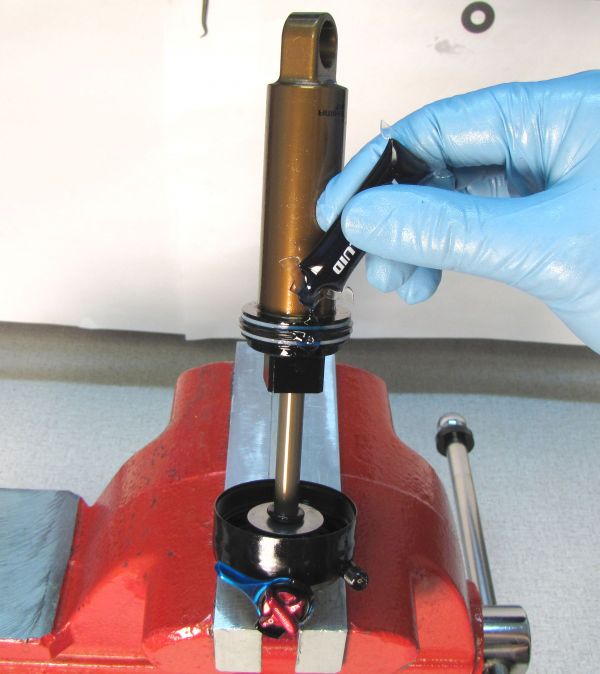
Step 5
Coat the main air seal and the air sleeve threads with a thin film of Float Fluid. Add 2cc of Float Fluid to the main air chamber, then slide the air sleeve in place over the main air seal. Compress the shock damper to help overcome trapped air pressure to thread the air sleeve to the eyelet. Tighten the air sleeve until hand tight (approximately 45 in-lb/ 5.1 Nm).
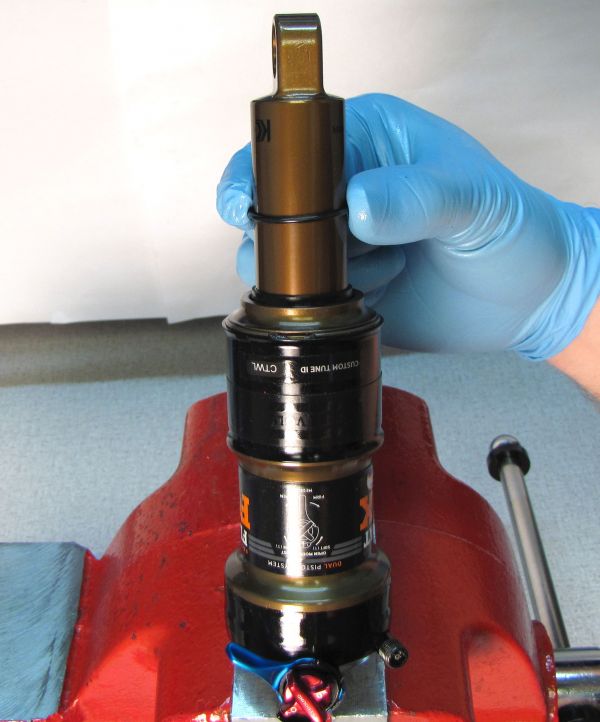
Step 6
Install a new sag indicator o-ring onto the shock body. Add air to your desired pressure by slowly compressing the shock through 25% of its travel 10-20 times after every 50psi addition. Reinstall the black air valve cap.
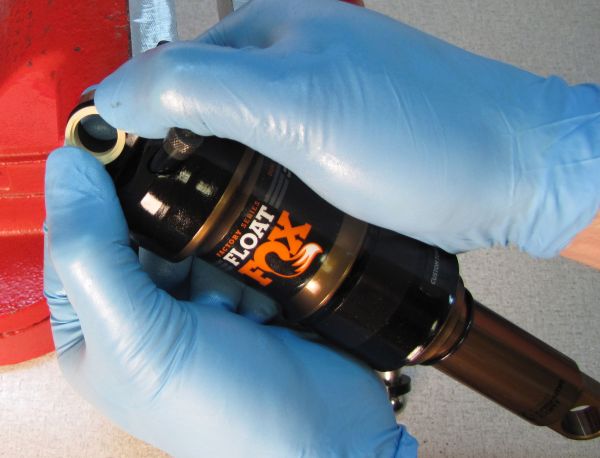
Step 7
Replace any eyelet hardware and clean the exterior of your shock. You have now completed the rebuild.

